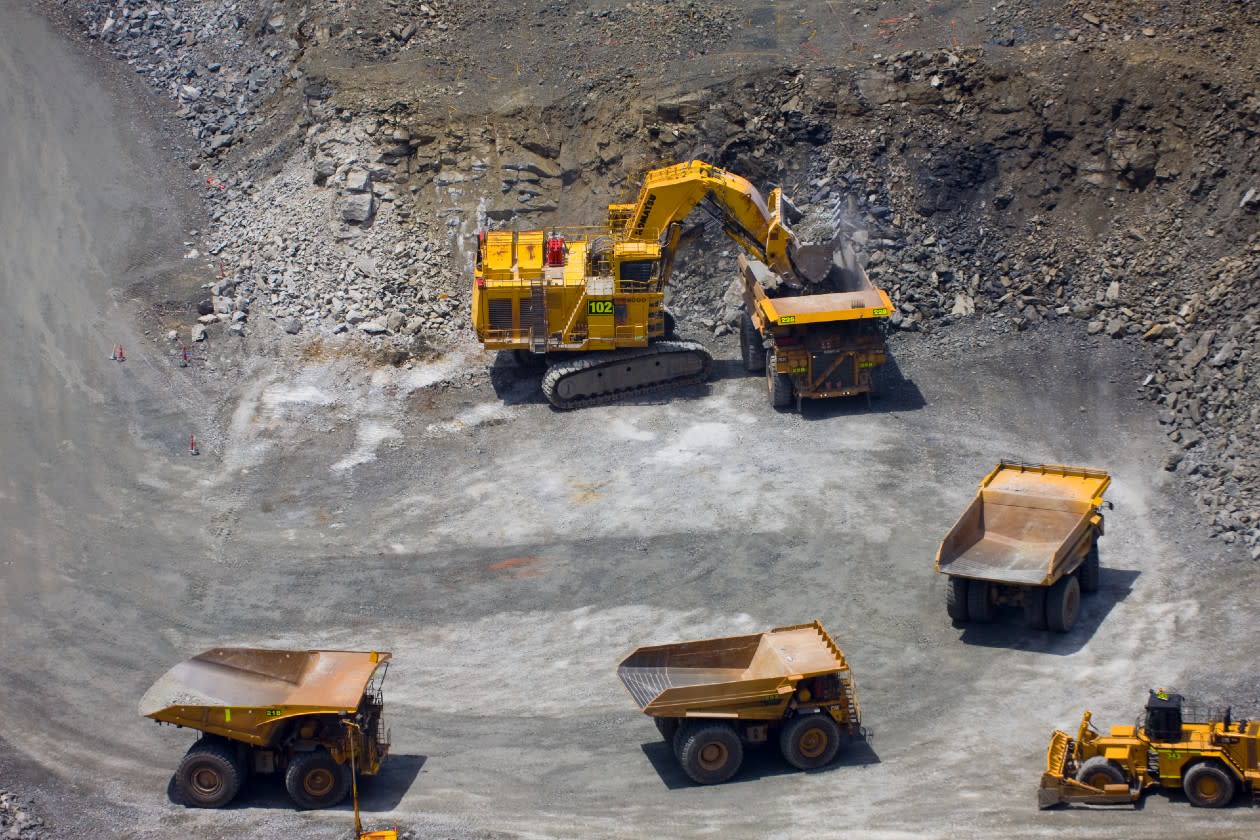Glencore’s half-year revenue was flat at $117.4bn. Modest growth in metals and minerals was offset by a decline in energy and steelmaking coal.
Underlying cash profit (EBITDA) fell 14% to $5.4bn, 2.9% behind market forecasts. Lower coal prices were a key contributor to the decline. Glencore’s also written down the value of its Colombian coal operations by $0.9bn.
There was a free cash outflow of $1.3bn. However, planned increases in copper production are expected to contribute to a full year in-flow of around $4bn. Net debt was up from $11.2bn to $14.5bn.
Glencore returned $1.8bn to shareholders and announced a further $1bn buyback after the period end, funded by the recent disposal of its agricultural business Viterra.
Production guidance is broadly unchanged with output of all commodities, bar energy coal, weighted to the second half.
The shares closed down 5.4% on the day.
Our view
A further deterioration in the coal market has dented Glencore’s first half financial performance. Management’s banking on the resolution of production issues in its copper operations to drive a better second half and deliver a return to cash generation.
We also took encouragement from efforts to improve efficiency, with plans underway to deliver $1bn of annual cost savings by the end of next year. The idea of moving the share listing to the US has been shelved, which should focus investor attention even more firmly the prospects for the business.
Glencore is one of the few major miners to retain its thermal coal assets but write downs of its Colombian and South African operations could be taken as a sign that management expect tough conditions are here to stay.
As Glencore manages the decline of its thermal coal operations, steelmaking coal should become a more important part of the mix. We’re supportive of this shift. While it’s not escaped the pricing pressure, margins are much higher than for thermal coal, and the longer-term demand picture looks much more positive.
Glencore has a large industrial portfolio producing metals and minerals. Industrial assets generated around three-quarters of the group’s cash profit in the first half. Coal still generates a decent chunk of these profits but over half now come from the metals and minerals operation, including copper and nickel. These metals are essential for global efforts to reduce carbon emissions and copper is an area of focus for Glencore’s future growth and investment.
There's also a marketing business, which acts as a global commodity marketplace and continues to outperform its longer-term targets. Glencore earns a slice of profit capitalising on different prices for the same commodities in different locations or time periods. Performance relies more on volatility in the market than whether prices are high or low, which offers a nice degree of diversification.
It's important to flag now, the Marketing business is extremely complex with a lot of moving parts. Investors should be aware of the risk that brings.
Glencore’s balance sheet is in good shape and, although there can be no guarantee, the dividend yield of 3.6% looks on fairly solid ground - with potential for a little upside if cash flows improve in line with guidance.
We think the outlook is encouraging for Glencore, with its large and growing copper exposure and clear plan in place for the coal portfolio. But the mining sector is facing challenges from US trade wars and weaker global growth, and Glencore has little control over either.
Environmental, social and governance (ESG) risk
Mining companies tend to come with relatively high ESG risk. Emissions, effluences and waste, and community relations are key risk drivers in this sector. Carbon emissions, resource use, health and safety and bribery, and corruption are also contributors to ESG risk.
According to Sustainalytics, Glencore's management of material ESG issues is strong.
Glencore's already paid $1.1bn in fines relating to past governance issues, but anti-corruption policies have improved more recently. A new 2024-26 climate action plan was recently approved by 90% of shareholders, which includes plans for a phasing down of thermal coal operations. There’s also a 2050 net-zero carbon emissions target in place along with interim plans to reduce direct, indirect and supply chain emissions by 15% and 50% by 2026 and 2035.
Glencore key facts
All ratios are sourced from LSEG Datastream, based on previous day’s closing values. Please remember yields are variable and not a reliable indicator of future income. Keep in mind key figures shouldn’t be looked at on their own – it’s important to understand the big picture.
This article is not advice or a recommendation to buy, sell or hold any investment.No view is given on the present or future value or price of any investment, and investors should form their own view on any proposed investment.This article has not been prepared in accordance with legal requirements designed to promote the independence of investment research and is considered a marketing communication.Non - independent research is not subject to FCA rules prohibiting dealing ahead of research, however HL has put controls in place(including dealing restrictions, physical and information barriers) to manage potential conflicts of interest presented by such dealing.Please see our full non - independent research disclosure for more information.


